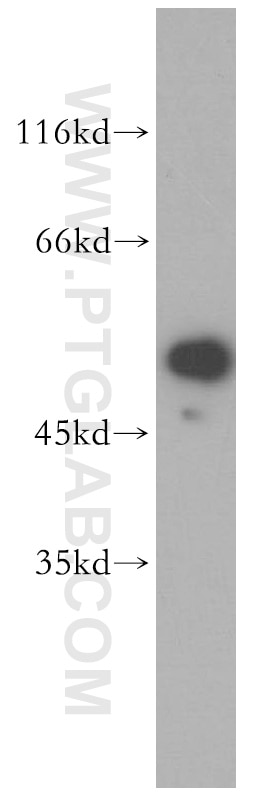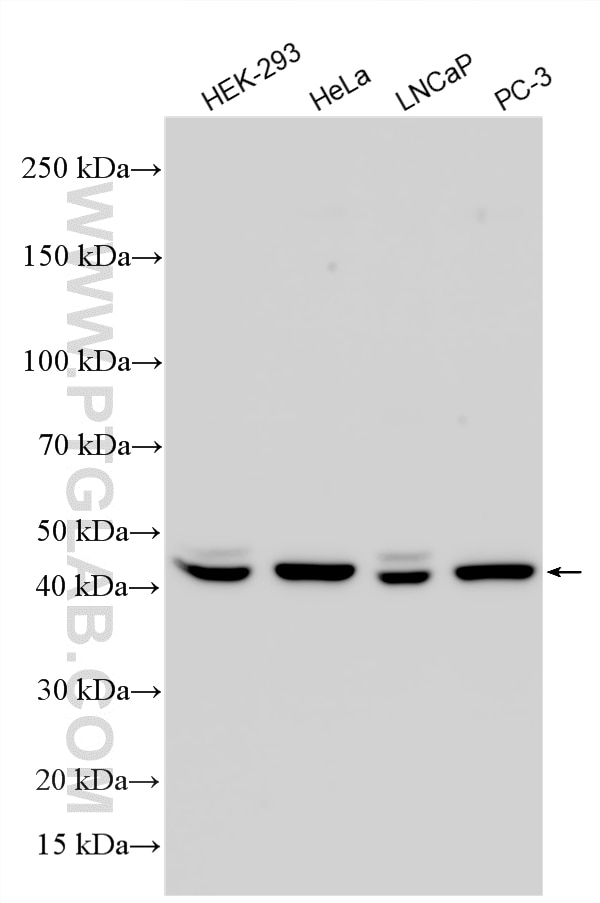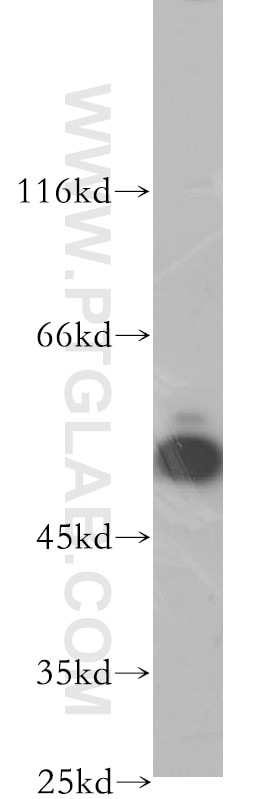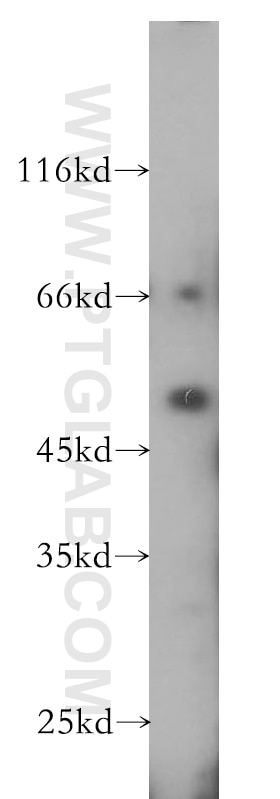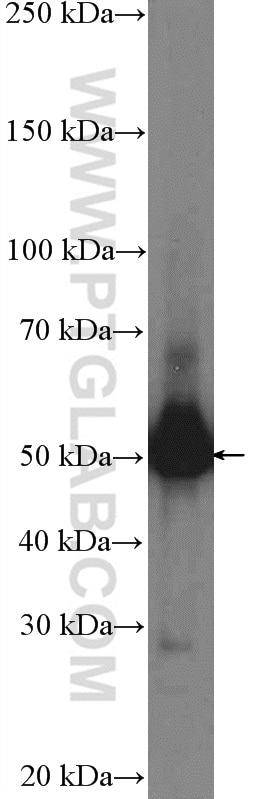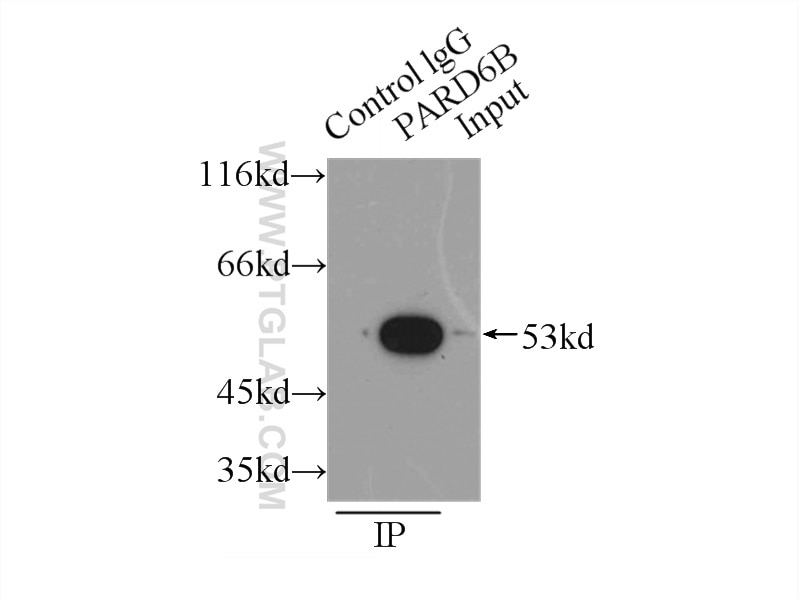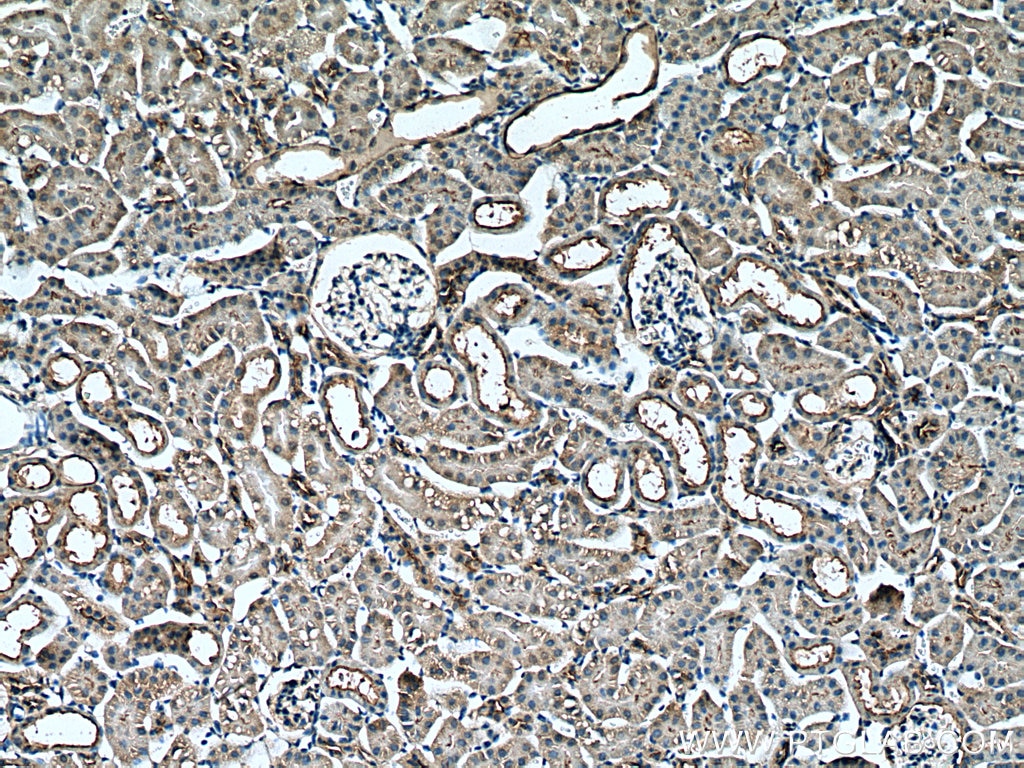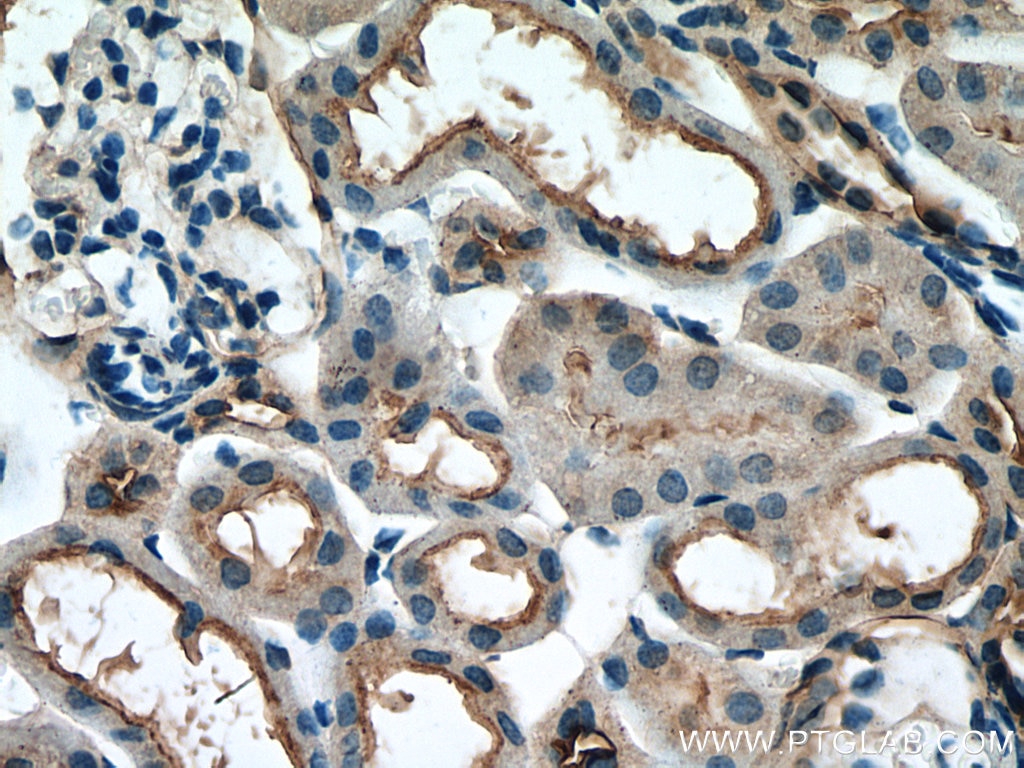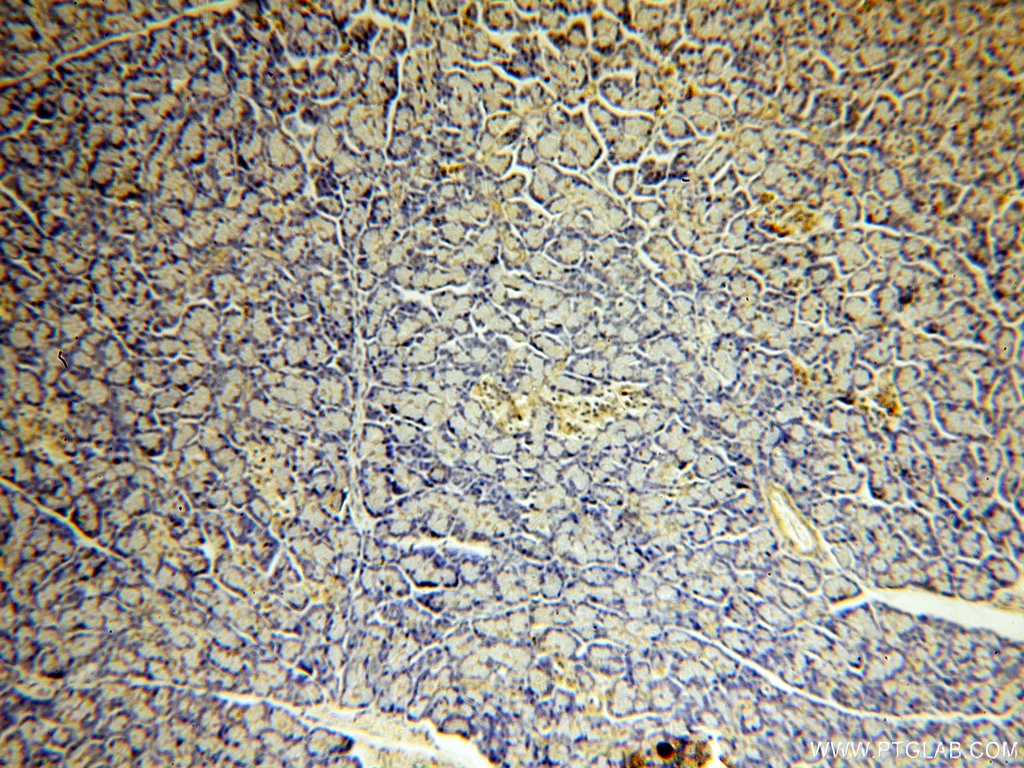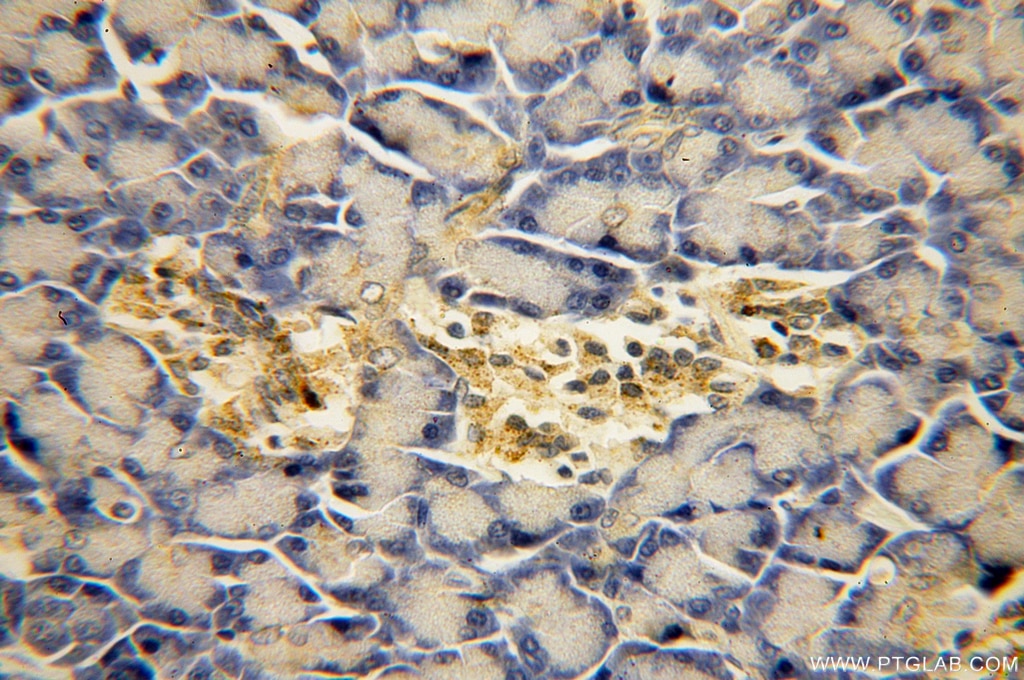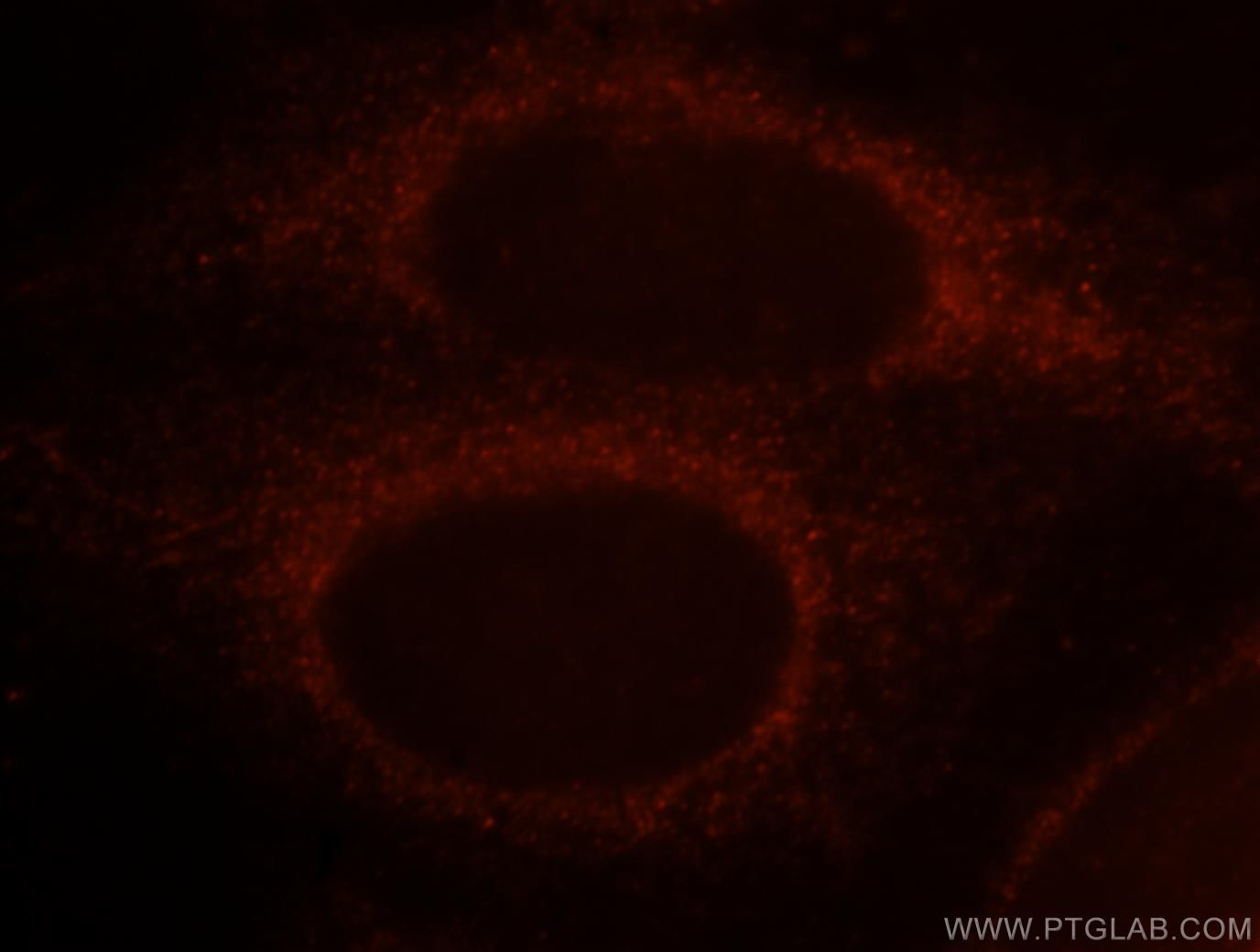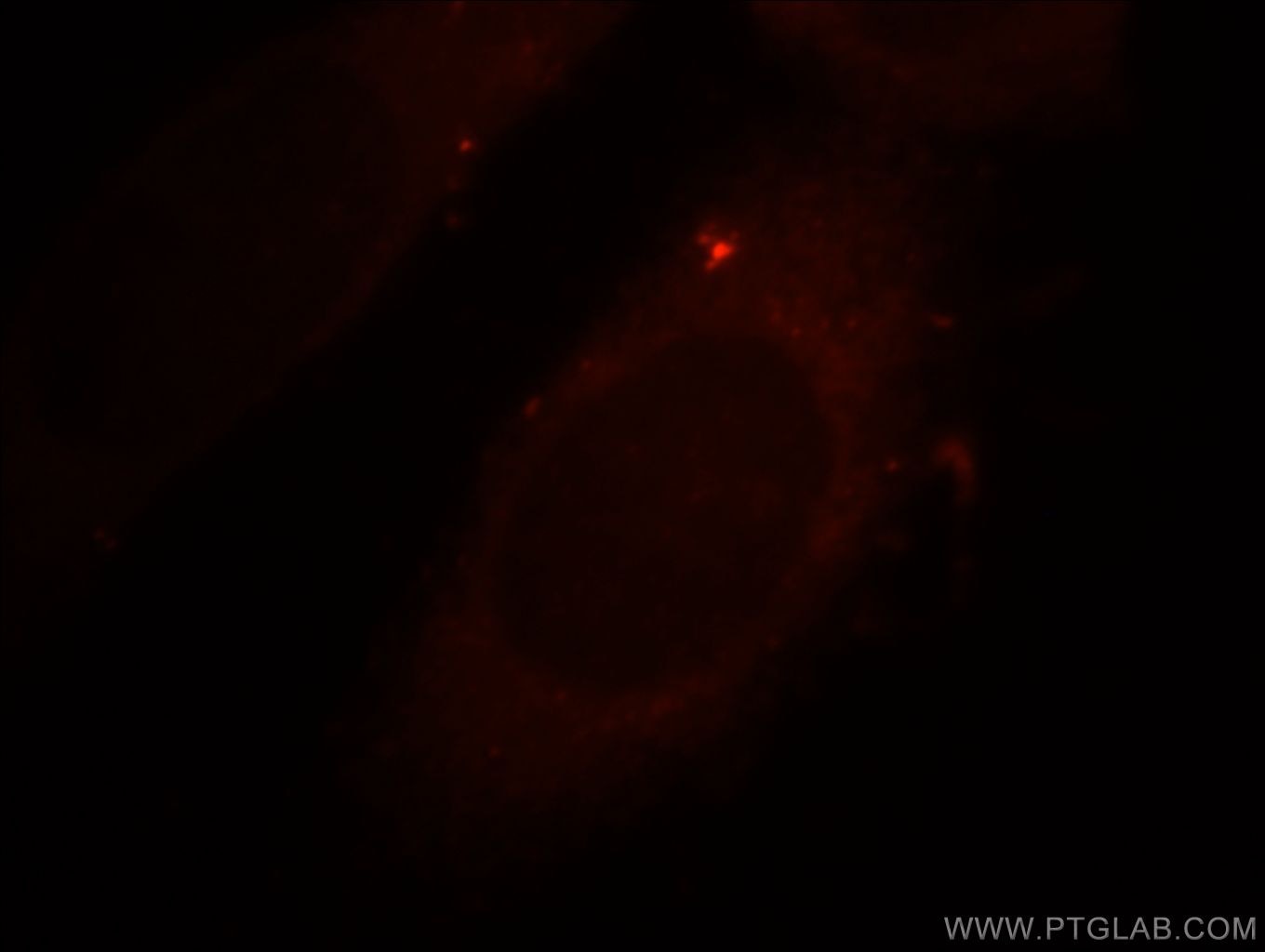PARD6B Polyklonaler Antikörper
PARD6B Polyklonal Antikörper für WB, IHC, IF/ICC, IP, ELISA
Wirt / Isotyp
Kaninchen / IgG
Getestete Reaktivität
human, Maus, Ratte
Anwendung
WB, IHC, IF/ICC, IP, ELISA
Konjugation
Unkonjugiert
Kat-Nr. : 13996-1-AP
Synonyme
Geprüfte Anwendungen
| Erfolgreiche Detektion in WB | HEK-293-Zellen, HeLa-Zellen, humanes Plazenta-Gewebe, LNCaP-Zellen, PC-3-Zellen |
| Erfolgreiche IP | HEK-293-Zellen |
| Erfolgreiche Detektion in IHC | Mausnierengewebe, humanes Pankreasgewebe Hinweis: Antigendemaskierung mit TE-Puffer pH 9,0 empfohlen. (*) Wahlweise kann die Antigendemaskierung auch mit Citratpuffer pH 6,0 erfolgen. |
| Erfolgreiche Detektion in IF/ICC | HepG2-Zellen, MCF-7-Zellen |
Empfohlene Verdünnung
| Anwendung | Verdünnung |
|---|---|
| Western Blot (WB) | WB : 1:1000-1:8000 |
| Immunpräzipitation (IP) | IP : 0.5-4.0 ug for 1.0-3.0 mg of total protein lysate |
| Immunhistochemie (IHC) | IHC : 1:50-1:500 |
| Immunfluoreszenz (IF)/ICC | IF/ICC : 1:10-1:100 |
| It is recommended that this reagent should be titrated in each testing system to obtain optimal results. | |
| Sample-dependent, check data in validation data gallery | |
Veröffentlichte Anwendungen
| WB | See 5 publications below |
| IHC | See 1 publications below |
| IF | See 1 publications below |
Produktinformation
13996-1-AP bindet in WB, IHC, IF/ICC, IP, ELISA PARD6B und zeigt Reaktivität mit human, Maus, Ratten
| Getestete Reaktivität | human, Maus, Ratte |
| In Publikationen genannte Reaktivität | human, Maus, Ratte |
| Wirt / Isotyp | Kaninchen / IgG |
| Klonalität | Polyklonal |
| Typ | Antikörper |
| Immunogen | PARD6B fusion protein Ag5083 |
| Vollständiger Name | par-6 partitioning defective 6 homolog beta (C. elegans) |
| Berechnetes Molekulargewicht | 41 kDa |
| Beobachtetes Molekulargewicht | 50-53 kDa |
| GenBank-Zugangsnummer | BC060847 |
| Gene symbol | PARD6B |
| Gene ID (NCBI) | 84612 |
| Konjugation | Unkonjugiert |
| Form | Liquid |
| Reinigungsmethode | Antigen-Affinitätsreinigung |
| Lagerungspuffer | PBS with 0.02% sodium azide and 50% glycerol |
| Lagerungsbedingungen | Bei -20°C lagern. Nach dem Versand ein Jahr lang stabil Aliquotieren ist bei -20oC Lagerung nicht notwendig. 20ul Größen enthalten 0,1% BSA. |
Hintergrundinformationen
PARD6B (also named PAR6B) is a member of the PAR6 family. PARD6B is known to play a key role in mammary epithelial cell biology. Several studies have been reported which indicate deregulated PARD6B signaling contributes to malignant epithelial cell phenotypes due predominantly to disrupted polymerization and maintenance of tight junctions (PMID: 22957302). The approximately 4.8-kb long PARD6B mRNA was predominantly detected in both adult and fetal kidneys, while much weaker but significant signals were observed in the placenta, lung, and liver (PMID: 11260256). This antibody detects PARD6B with an apparent molecular weight of 50-53 kDa as has been demonstrated by several researches (PMID: 22496418; 25662318).
Protokolle
| PRODUKTSPEZIFISCHE PROTOKOLLE | |
|---|---|
| WB protocol for PARD6B antibody 13996-1-AP | Protokoll herunterladen |
| IHC protocol for PARD6B antibody 13996-1-AP | Protokoll herunterladenl |
| IF protocol for PARD6B antibody 13996-1-AP | Protokoll herunterladen |
| IP protocol for PARD6B antibody 13996-1-AP | Protokoll herunterladen |
| STANDARD-PROTOKOLLE | |
|---|---|
| Klicken Sie hier, um unsere Standardprotokolle anzuzeigen |
Publikationen
| Species | Application | Title |
|---|---|---|
iScience Induced retinal pigment epithelial cells with anti-epithelial-to-mesenchymal transition ability delay retinal degeneration | ||
PLoS One PKCζ and JNK signaling regulate radiation-induced compensatory proliferation in parotid salivary glands. | ||
Theriogenology Influence of Wilms' tumor suppressor gene WT1 on bovine Sertoli cells polarity and tight junctions via non-canonical WNT signaling pathway. | ||
Cancer Lett Oncogenic functions and therapeutic potentials of targeted inhibition of SMARCAL1 in small cell lung cancer | ||
Cancer Gene Ther PRAD6A promotes lung adenocarcinoma cell proliferation and invasion through Serpina3 | ||
J Agric Food Chem Discovery and Functional Characterization of a Recombinant Fragment of Human Collagen Type XVII |
